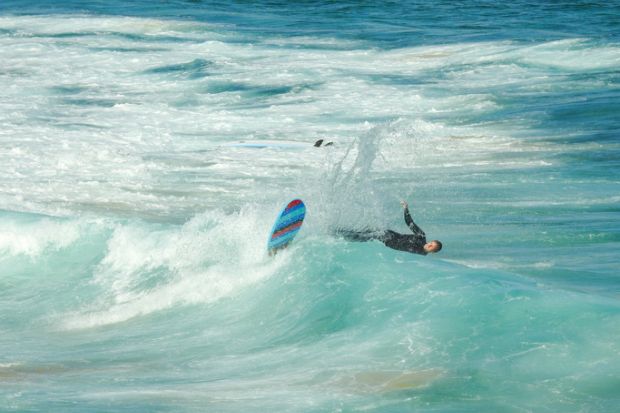Growth in Australia’s overseas student intake could tumble to barely one-seventh of its post-pandemic peak, it has been claimed, as the government tries to hose down perceptions that it favours unbridled population increases.
Immigration expert Abul Rizvi said students would be able to contribute no more than 40,000 a year to net migration, down from a “historically unheard of” figure of almost 270,000 in 2022-23, if Australia was to meet a net migration target of 235,000 that had been tacitly agreed to by both major political parties.
Dr Rizvi told a forum, organised by the University of Melbourne’s Centre for the Study of Higher Education, that forthcoming policy changes – including increased English language requirements and a “genuine student” test – would help suppress student numbers.
In the meantime, immigration officials had been “ramping up student visa refusals” through subjective decisions based on the existing genuine temporary entrant (GTE) test. Additional “tightening measures” later this year would further dampen the student intake, he said.
But these changes would not be enough to reduce the net student intake to 40,000. “The government will have to cut further. And it will have to cut further in time to be able to demonstrate, in the context of the 2025 election, that it is not pursuing a policy of ‘big Australia’.”
In the three years before the coronavirus pandemic, the annual growth in overseas student numbers exceeded 40,000 in higher education alone. Dr Rizvi’s net increase would apply not only to higher education but also vocational training, English colleges and schools.
He said the government deserved credit for replacing the GTE requirement with a genuine student test. “But I don’t think it will change much in terms of [visa] refusal rates. The refusal rates will just be based on a different subjective criterion, albeit a slightly better one.”
The new test applies to visa applications lodged from 23 March. Instead of providing 300-word statements asserting that they have no intention of remaining in Australia after their courses, applicants will now be required to answer a series of “targeted questions” on their reasons for choosing the country, the benefits they expect from their studies and details of their family and community ties, among other things.
The Independent Tertiary Education Council Australia said its members had been given just eight days’ notice of the new arrangements. “This is entirely unacceptable,” said chief executive Troy Williams. He said the genuine student test was “one of the most significant changes to the student visa framework in more than eight years”.
The Department of Home Affairs said it would “shortly commence” a “targeted outreach and communications campaign” to help institutions transition to the new arrangements and ensure integrity in the student visa programme.
Tertiary education consultant Claire Field said the test would mainly impact vocational rather than higher education. She said foreigners seeking visas for vocational study could struggle to convince immigration officials of the benefits, because Australia’s vocational qualifications – unlike its degrees – were not widely recognised around the world.
But Ms Field said Canberra would still be able to suppress higher education student numbers if it chose to do so. She said officials had been rejecting visa applications that would never have been denied in the past, and that would still be possible under the new test. “If government wants to reduce the number of students coming in to study in higher education, it will find ways,” she told the forum.
Dr Rizvi said the government was “going back to the future” by implementing a genuine student requirement. A similar test had been “used as a backstop” in the 2000s, with only a few visas refused as a result. “We’ve flipped it around. We’ve now made the GTE test and genuine student test the primary means of decision-making. That is fundamentally poor public policy.”
He said the government should stop using “subjective criteria” to refuse student visas. “What it leads to is a massive waste of resources on the student side, on the university side and on the government side. It’s a massive waste of the students’ time, especially if they’re going to be put through the third degree and then refused based on…not much more than a whim.”
Register to continue
Why register?
- Registration is free and only takes a moment
- Once registered, you can read 3 articles a month
- Sign up for our newsletter
Subscribe
Or subscribe for unlimited access to:
- Unlimited access to news, views, insights & reviews
- Digital editions
- Digital access to THE’s university and college rankings analysis
Already registered or a current subscriber? Login








